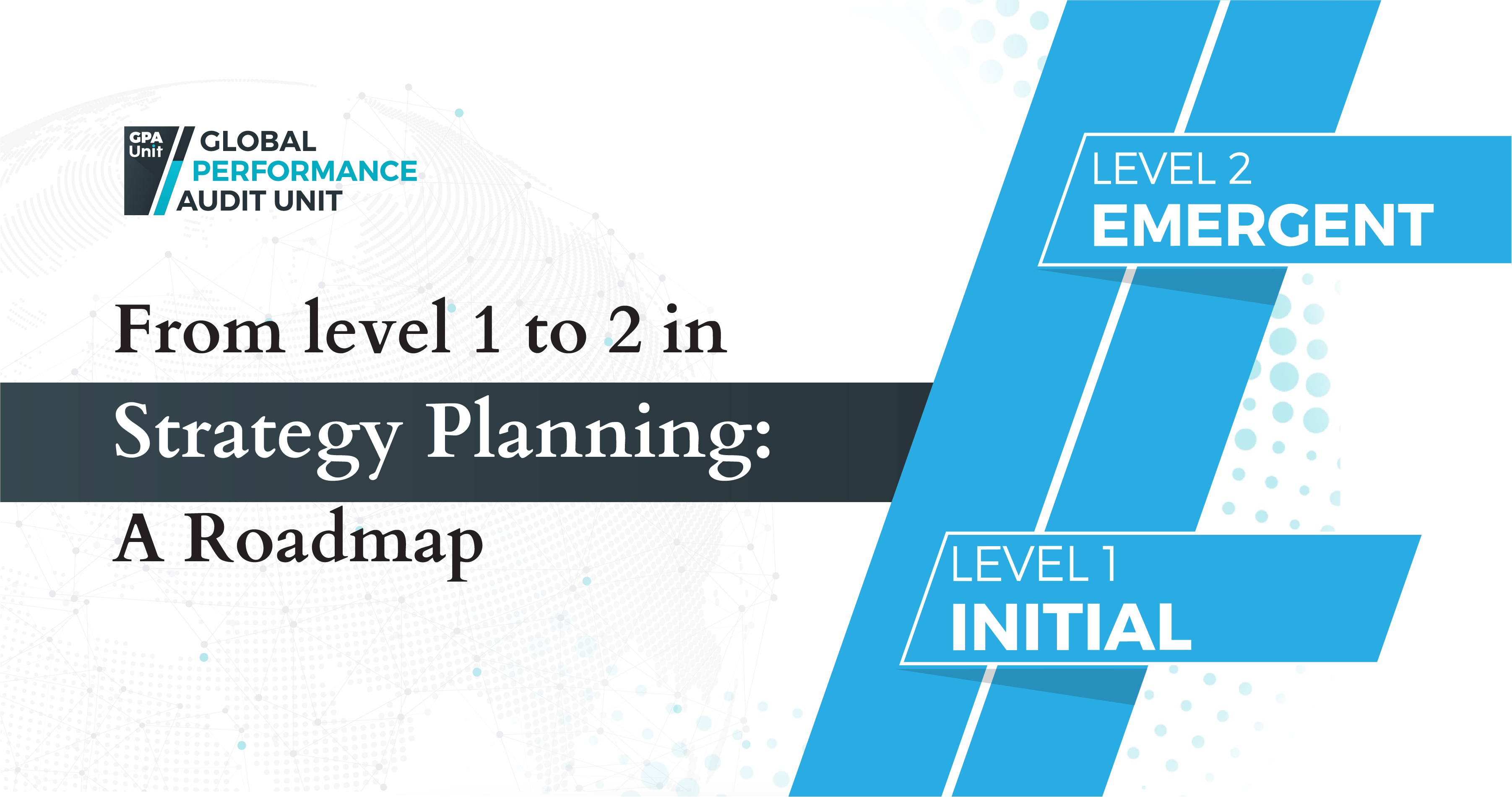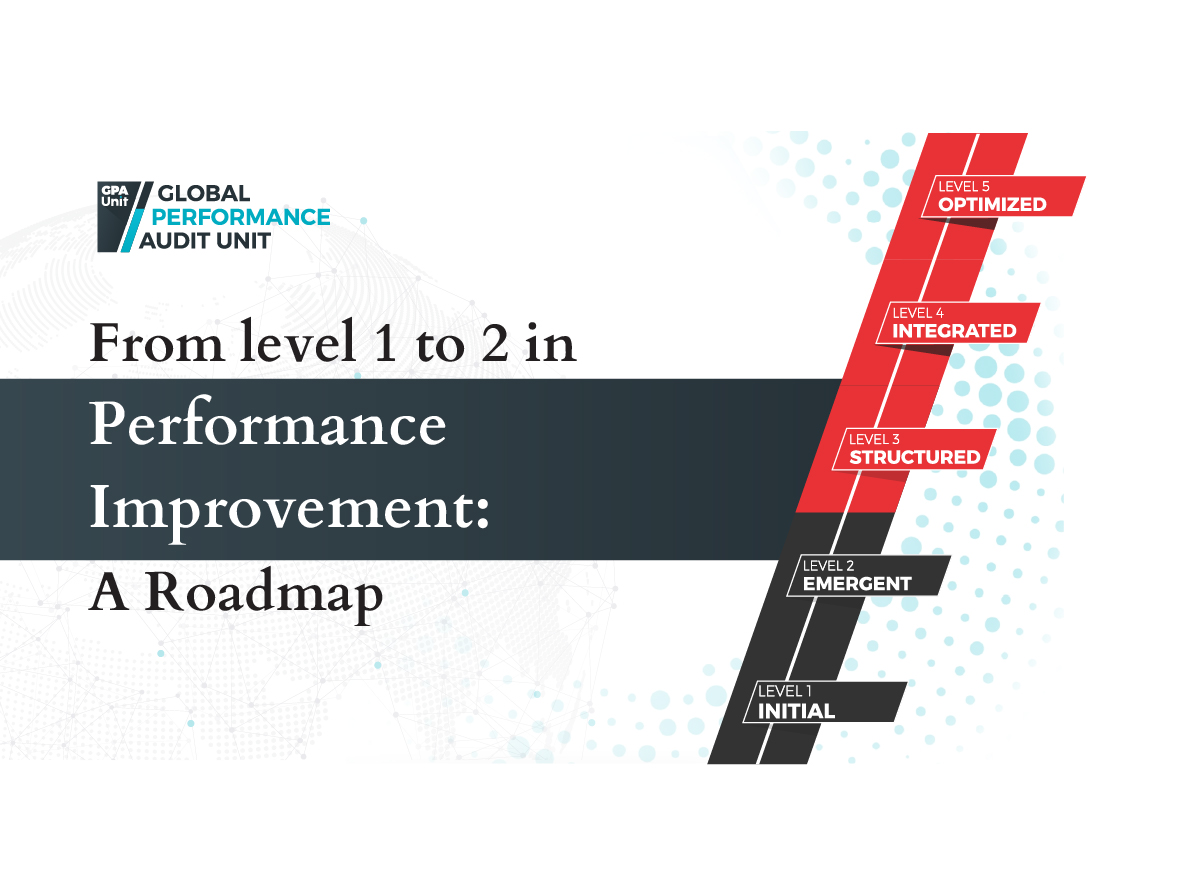From level 1 to 2 in Strategy Planning: A Roadmap

Strategic planning is the foundation of organizational success, yet many companies struggle to move beyond reactive decision-making. Without a structured approach, priorities shift unpredictably, goals remain vague, and execution lacks direction. While some organizations recognize the need for strategic planning, they often find themselves at Level 1 maturity, where efforts are informal, disconnected, or non-existent.
Reaching Level 2 marks a significant shift—it’s the first step toward a structured, measurable, and aligned strategy. Organizations at this level introduce basic planning processes, start defining strategic objectives, and establish early performance measurement mechanisms. While still developing, Level 2 organizations have begun the transition from instinct-driven leadership to strategy-driven decision-making.
This article provides a roadmap for moving from Level 1 to Level 2 in Strategic Planning Maturity. It highlights the key gaps that keep organizations at Level 1 and the essential milestones needed to establish a more structured approach. Whether your organization is just beginning to formalize its strategy or looking to refine its current practices, understanding this transition is the first step toward long-term success.
Level 1 and the missing foundations
Organizations at Level 1 Maturity in Strategic Planning operate without a structured approach to defining, executing, or reviewing strategy. While leadership may have a general sense of direction, strategy remains informal—decisions are made reactively, priorities shift unpredictably, and long-term goals are rarely documented or systematically pursued.
One of the most evident gaps at this stage is the lack of a clear organizational identity. A strong strategy is built on a well-defined vision, mission, and values, yet at Level 1, these elements are often missing, vague, or disconnected from daily operations. Employees may struggle to understand the organization’s purpose, leading to inconsistent decision-making and disengagement.
Beyond identity, organizations at Level 1 lack a structured process for strategy formulation. Planning, when it happens, is not guided by a formal framework—there is no clear way to assess external factors, involve key stakeholders, or ensure continuity across leadership changes. As a result, strategy tends to be short-term and reactive, shaped more by immediate challenges than by long-term aspirations.
Even when leadership has broad strategic ambitions, these ideas rarely translate into concrete, actionable objectives. There is no structured method for defining priorities, assigning KPIs, or linking initiatives to strategic goals. Without clear articulation, execution becomes fragmented—departments and teams operate independently, making decisions based on their own interpretations rather than a shared strategic vision.
Another defining characteristic of Level 1 is misalignment across the organization. Strategy, if it exists, remains confined to leadership discussions and does not cascade to departments or employees in a meaningful way. Teams work in silos, with no structured way to connect strategic objectives to operational realities. Performance measurement is minimal or nonexistent, and without strategy monitoring tools like scorecards or dashboards, organizations have no reliable way to track progress.
Finally, governance and communication structures at this stage are either weak or entirely absent. There are no clear roles and responsibilities for ensuring strategy implementation, and employees receive little to no communication about organizational goals. Without a structured review process, strategy is rarely revisited or adjusted in response to changing conditions, leaving the organization vulnerable to external disruptions.
At Level 1, strategy is more of an idea than a structured practice. The absence of clear direction, execution frameworks, and accountability mechanisms leads to inefficiencies, inconsistent decision-making, and missed opportunities for long-term success.

The key milestones of Level 2
Reaching Level 2 Maturity in Strategic Planning marks the first step toward a structured, intentional approach to strategy. At this stage, organizations begin to define their long-term direction, establish initial performance measurement practices, and ensure strategy is no longer just a leadership exercise but a guiding framework for the organization. While still in the early phases of maturity, Level 2 lays the groundwork for a more cohesive and measurable strategic planning process.
One of the first key milestones at this level is the formal documentation of the organization’s vision, mission, and values. While these elements may have existed informally before, they now take on a structured form, providing clearer guidance for decision-making. Leadership begins to align strategic discussions with these identity markers, ensuring that strategy is no longer reactive but rooted in a defined purpose. Employees may not yet fully engage with them, but there is at least a common reference point shaping the organization’s direction.
Alongside identity, Level 2 organizations introduce the first structured steps in strategy formulation. Instead of making decisions based on immediate needs, leadership adopts a basic planning horizon of at least one year, shifting from short-term thinking to a more forward-looking approach. External factors are considered more deliberately, even if through a simple assessment rather than an advanced strategic analysis. Strategic planning is now recognized as an ongoing process rather than a one-time exercise, and key stakeholders begin to have a role in shaping it.
Perhaps the most noticeable shift at Level 2 is the translation of strategy into actionable objectives. While strategy may still be broad, it is no longer just an idea—it is broken down into concrete goals that provide direction. At this stage, organizations begin defining performance indicators for at least a portion of their objectives, introducing the first structured way to measure progress. The use of tools like scorecards and dashboards remains limited, but initial efforts to track key results provide visibility into whether strategy is moving in the right direction.
For strategy to have an impact, it must extend beyond leadership discussions and be embedded across the organization. Level 2 organizations take the first steps toward strategy alignment, ensuring that at least some objectives and KPIs are cascaded to departments. This shift helps create a basic link between high-level priorities and operational execution. While alignment is not yet complete, departments begin working within a common strategic framework rather than in silos.
With these new structures in place, organizations at Level 2 also recognize the need to monitor and refine strategy over time. A formal strategy review process is not yet fully developed, but there is at least an effort to revisit objectives periodically and make adjustments based on organizational needs. Leadership starts to recognize that strategy is not static, and early governance mechanisms emerge to support its implementation.
Lastly, strategy at Level 2 is no longer confined to the executive team. Organizations take the first steps toward improving governance and communication, ensuring that employees receive more visibility into strategic priorities. A formal governance framework may still be in development, but there is at least some effort to define roles and responsibilities for executing strategy. Communication remains limited but becomes more structured, with leadership recognizing the importance of sharing key strategic messages with the wider organization.
At this stage, strategy is still in its early stages of maturity, and many gaps remain. However, by introducing documentation, measurement, alignment, and communication, organizations at Level 2 maturity move away from an entirely reactive approach and begin building the foundation for a more structured and strategic future.
Benefits of reaching Level 2
Moving to Level 2 in Strategic Planning Maturity provides organizations with their first sense of strategic stability. With a defined direction, measurable objectives, and an initial level of alignment, decision-making becomes less reactive and more intentional. Leaders gain a clearer framework for setting priorities, employees begin to see how their work connects to broader goals, and progress is no longer based on intuition alone. While the strategy function is still developing, the organization now has the tools to track performance, adjust plans when necessary, and create stronger links between vision and execution. These early structures not only improve internal coordination but also set the stage for further growth, making future strategic improvements easier to implement.
The first steps toward strategic maturity
Reaching Level 2 Maturity in Strategic Planning is a crucial step for organizations looking to move beyond informal decision-making. By establishing a clear direction, introducing measurable objectives, and creating the first layers of alignment, strategy begins to function as a guiding framework rather than an abstract concept. While there is still a long way to go, the foundations laid at this stage make future strategic growth possible. Organizations that recognize these milestones and work toward them are better positioned to build a more structured, adaptable, and effective strategic planning process.
| DATE | May 22nd, 2025 |
| Category | Blog Posts |
| Reading Time | 6 |




